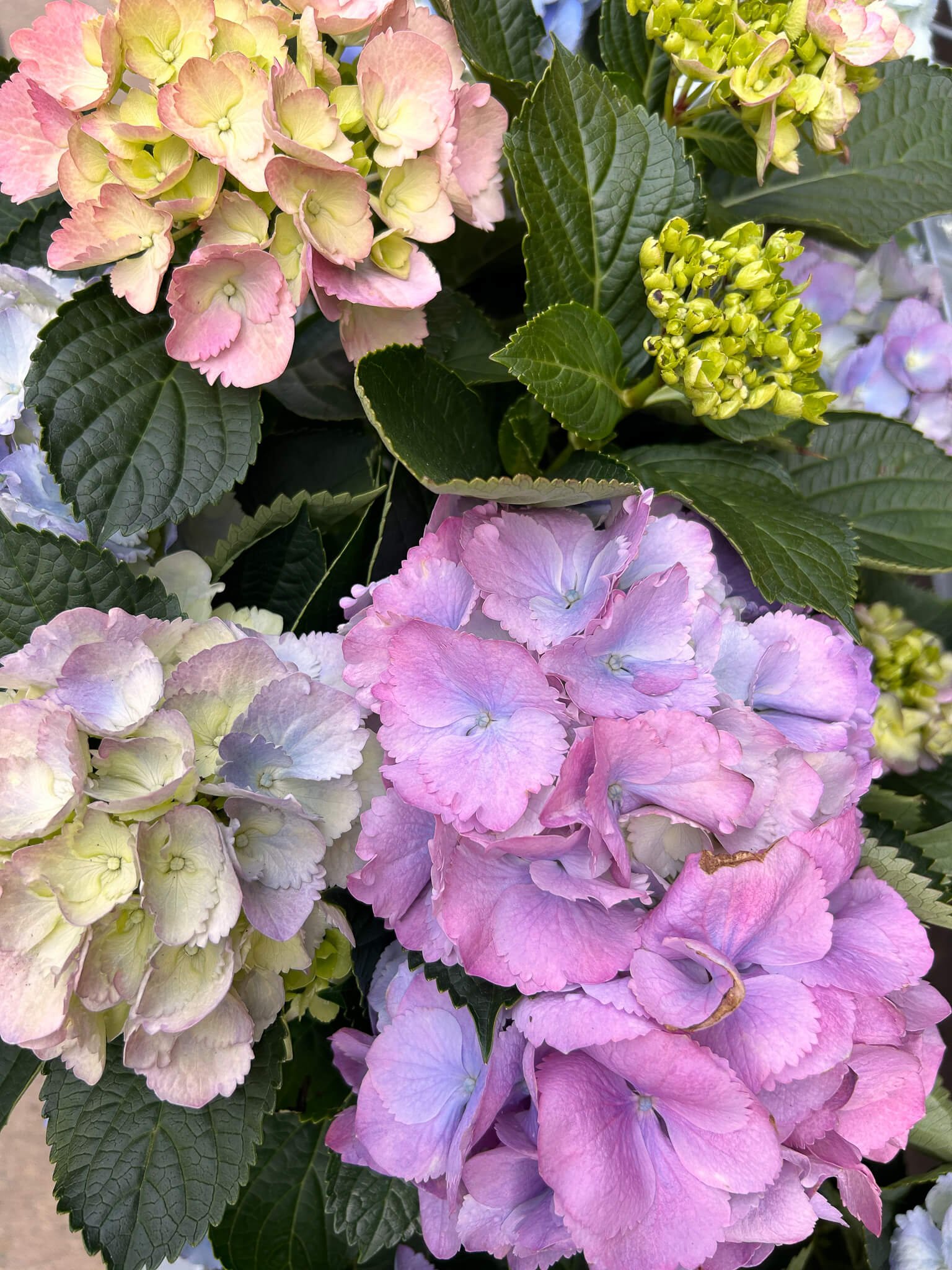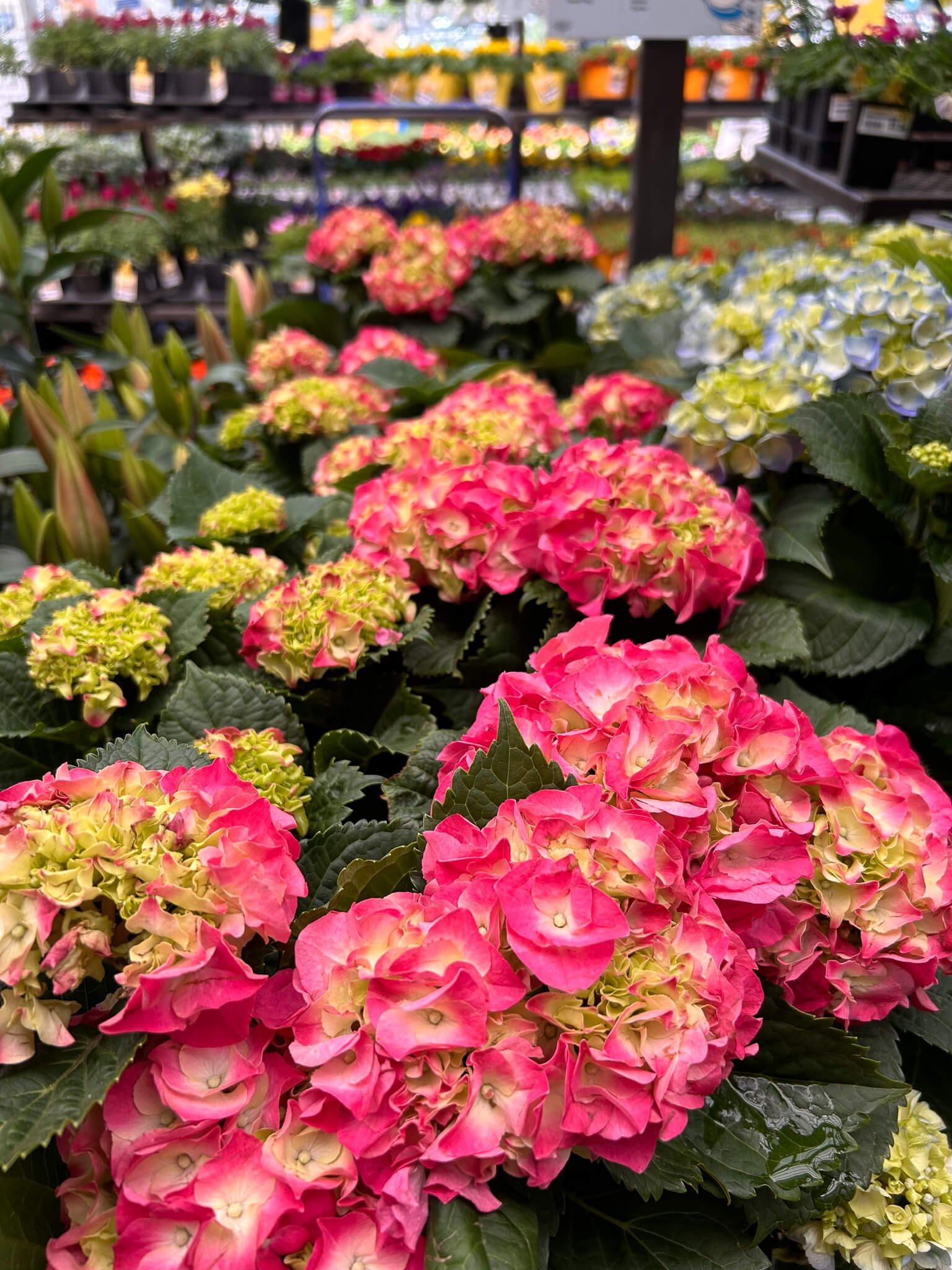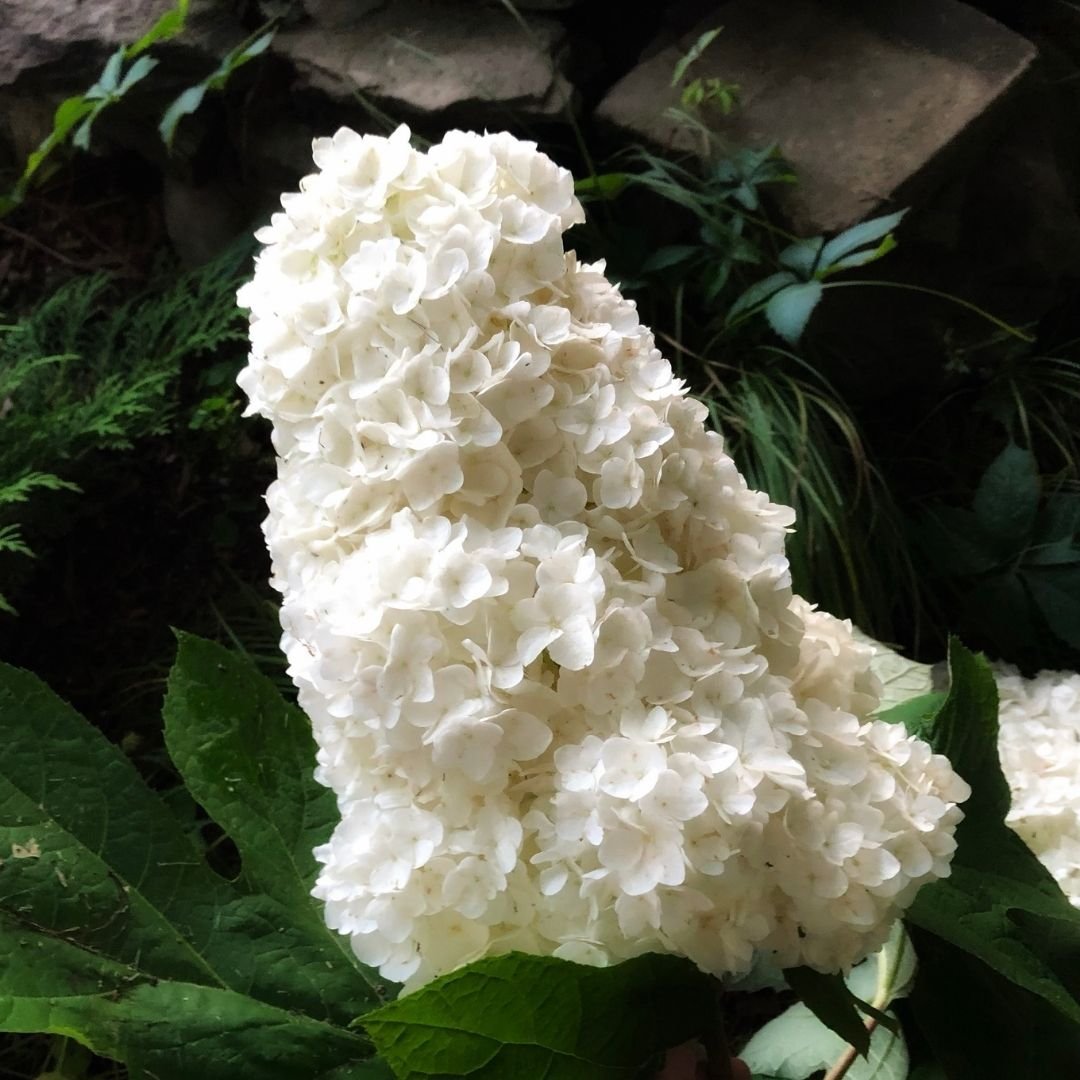Bigleaf Hydrangea Landscaping Ideas for Your Garden
The Ultimate Guide to Using Bigleaf Hydrangeas in the Garden
Bigleaf hydrangeas (Hydrangea macrophylla) are a group of deciduous shrubs native to Japan and China belonging to the Hydrangeaceae family.
They feature mophead or lacecap type blooms that last all summer long, in colors ranging from pink and blue to purple, red or white. Flower color is influenced by the pH of the soil.
Bigleaf hydrangeas grow in zones 5-9 and prefer part shade with protection from the hot afternoon sun. They like rich, deep, and well-draining soil.
They are the fussiest hydrangea type, demanding careful siting and consistent moisture. Without adequate water and protection from harsh sun, they’re prone to wilting, leaf scorch, and disease.
Deer will eat bigleaf hydrangea flower buds and leaves, especially the tender young growth.
If you have lots of deer browsing in your yard, hydrangea landscaping may not be the best choice for you. Try a deer-resistant shrub like Ruby Spice summersweet instead.
Read on to learn more about the history of the bigleaf hydrangea and get helpful hydrangea landscaping ideas and tips.
Nikko Blue, the classic blue bigleaf hydrangea landscaping idea.
Bigleaf Hydrangea History
The introduction of the bigleaf hydrangea to Western gardens can be traced back to the early 19th century.
In 1775, Swedish naturalist Carl Peter Thunberg visited Japan and brought five bigleaf hydrangeas back to Europe, incorrectly identifying them as members of the viburnum species.
And in 1788, explorer Sir Joseph Banks also brought a bigleaf hydrangea from Japan to England under the name Hydrangea hortensis.
As global trade and exploration expanded, these bigleaf hydrangeas were propagated and found their way to European and North American gardens, captivating horticulturists and plant collectors alike with their large, showy, multi-hued flowers.
The fascination with hydrangeas reached a peak during the Victorian era when these blooms became highly fashionable in European gardens.
Over the years, various cultivars were developed, broadening the assortment of flower shapes, colors, and sizes.
Modern plant breeding programs have significantly advanced the hardiness of the bigleaf hydrangea, with breeders introducing reblooming varieties that are less susceptible to frost and cold weather damage.
Today, the bigleaf hydrangea is one of the most popular flowers in the world, with dedicated societies, gardens, and admirers holding gatherings and exhibitions to showcase the beauty of this lovely flowering shrub.
Bigleaf hydrangeas can have either mophead or lacecap flower types.
Mopheads are huge, ball-shaped flowers.
Lacecaps are flat-topped clusters of tiny, fertile flowers surrounded by larger, sterile florets.
This article contains affiliate links, which means I may earn a small commission at no extra cost to you. These commissions help me to continue bringing you free, high-quality design articles. Thank you for your support!
What is a Reblooming Hydrangea?
With climate change presenting new challenges for gardeners, there has been a growing emphasis on enhancing the hardiness of plants like the bigleaf hydrangea.
Breeders have been successful in introducing reblooming cultivars that have the potential to bloom despite damage from winter or early spring weather extremes.
Unlike older hydrangea varieties that bloom on old wood, reblooming hydrangeas bloom not only on old wood but also on new growth.
This means that even if the initial early spring flowers are damaged by cold temperatures or late spring freezes, the plant has the ability to rebound and produce a second, or even third, set of blooms later in the season.
If you're looking for bigleaf hydrangea landscaping ideas that can withstand spring weather extremes, read on to discover different cultivar types, including reblooming varieties.
Bigleaf hydrangea landscaping has become a classic American garden trend.
How to Plant and Grow Bigleaf Hydrangeas
Planting: The best time of year to plant a bigleaf hydrangea is in the spring or fall, giving the roots time to establish before the onset of extreme hot or cold weather. Water deeply immediately after planting. Read “How to Water Your Plants” for tips on proper watering techniques.
Location: Choose a location with well-drained soil that is rich in organic matter. Bigleaf hydrangeas prefer soil that retains moisture but does not become waterlogged. Select a spot with partial shade and protection from the intense afternoon sun.
Soil: Amend the soil with organic matter, such as compost, shredded leaves, or Leaf-gro® to improve drainage and soil fertility. If you would like your bigleaf hydrangea to bloom specifically pink or blue, consider getting a soil test and adding either sulfur or lime to the soil. Add sulfur for blue flowers and lime for pink blooms.
Mulch: Apply a layer of organic mulch around the base of the plant to retain soil moisture, regulate temperature, and suppress weeds. Make sure the mulch does not touch the base of the plant.
Watering: Keep the soil consistently moist but not waterlogged and soggy. Supplemental watering is essential to keep bigleaf hydrangeas looking their best, especially during periods of drought. Are you in a drought? Check the U.S. Drought Monitor map.
Pruning: Traditional bigleaf hydrangeas grow buds in late summer and fall on old wood - consequently, pruning should be done in early to mid-summer, immediately after flowering. No more than 1/3 of the plant should be cut back. Endless Summer® hydrangeas flower on old and new wood, and can be pruned as soon as the first flush of spring blooms begins to fade.
Winter Protection: Bigleaf hydrangeas grown in zone 5 may need winter protection. Create a cylinder-shaped wrap around plants with burlap or chicken wire, and use straw or leaves to fill up the empty space within.
Do Bigleaf Hydrangeas like Sun or Shade?
Bigleaf hydrangeas thrive in part shade with 2-4 hours of sunlight per day. While they can tolerate more sun, bigleaf hydrangeas prefer dappled or filtered light, with protection from the intense hot afternoon sun.
In hot climates, providing bigelaf hydrangea landscaping with morning sun and afternoon shade can help prevent flowers and leaves from wilting and scorching.
In cooler regions, bigleaf hydrangeas may tolerate more sun, but protection from harsh afternoon sunlight is still recommended.
If you need a hydrangea that can handle full sun and heat, try a panicle hydrangea instead!
Endless Summer® Twist and Shout Reblooming Hydrangea. Image courtesy of Bailey Nurseries.
Bigleaf Hydrangea Landscaping Ideas
Foundation Planting: Plant bigleaf hydrangeas along the foundation of your home. Their lush green foliage and colorful blooms will enhance the curb appeal of your home.
Mixed Borders: Create a mixed border planting by combining bigleaf hydrangeas with other complementary plants. Consider pairing with perennials, ornamental grasses, and evergreen shrubs for four seasons of visual appeal.
Mass Planting: Plant bigleaf hydrangeas in groups to create a mass of color. This approach works well in large garden beds or along pathways or fences, providing a striking visual impact.
Container Gardening: Grow bigleaf hydrangeas in containers on patios, balconies, or front porches, bringing a burst of color to a smaller space. Containers dry out quickly and require more water than garden beds.
Woodland Gardens: The dappled shade underneath the canopy of tall trees is an ideal spot for the bigleaf hydrangea. Combine with other partial-shade loving plants like Japanese camellias, Japanese andromeda, azaleas, and rhododendrons.
Accent Planting: Use bigleaf hydrangeas as a focal point in the landscape. Plant strategically to draw attention to specific areas of the garden, like entryways, water features, pathways, or seating areas.
Vintage Cottage Garden: For a charming, informal look, plant bigleaf hydrangea alongside old-fashioned cottage garden favorites like foxgloves, garden phlox, hollyhocks, catmint, hibiscus, and roses.
Bigleaf Hydrangea Cultivars
If you are looking for bigleaf hydrangea landscaping ideas, here is a list of popular cultivars to browse, keeping in mind there are numerous varieties available with more coming on the market each year. This is by no means an exhaustive list!
Flower color is influenced by the pH of the soil. Read on to learn how to alter the pH of soil and influence the color of your hydrangea’s flowers.
White Flowers:
Endless Summer® Blushing Bride® Reblooming Hydrangea (Hydrangea macrophylla ‘Blushing Bride’): A 3-6 foot high and wide shrub with deep green leaves and pure white mophead flowers. Flowers age to a blush pink, depending on soil pH.
Grin and Tonic™ Reblooming Hydrangea (Hydrangea macrophylla ‘Hokomagrito’): Mophead flower clusters emerge lime green and change to bright white as summer progresses. Dark green leaves and a 2-3 foot tall and wide, compact habit. Makes a great companion plant for roses.
Kanmara® Splendour in Champagne® (Hydrangea macrophylla ‘H212904’): An elegant, shade-tolerant variety perfect for patios and containers, with large cream to blush-colored mophead flowers.
Lanarth White (Hydrangea macrophylla ‘Lanarth White’): An older cultivar with lacecap flowers growing 6 feet tall and wide. Flowers have sterile white florets surrounding tiny inner blue flowers.
Endless Summer® Blushing Bride hydrangea landscaping. Image credit: Bailey Nurseries
Pink/Blue or Red/Purple Flowers:
Endless Summer® BloomStruck® Reblooming Hydrangea (Hydrangea macrophylla 'PIIHM-II'): Vivid rose-pink or purple-blue mophead flowers rebloom all summer long. Grows 3-4 feet tall and 4-5 feet wide, with deep red stems and dark green leaves. Improved disease resistance, especially to powdery mildew.
Endless Summer® Pop Star® Reblooming Hydrangea (Hydrangea macrophylla ‘BAILMACSIX’): Electric blue or bright pink lacecap flowers bloom all summer long and attract pollinators. Compact 18-36 inch tall and wide size makes it great for containers and small spaces.
Endless Summer® The Original Reblooming Hydrangea (Hydrangea macrophylla ‘BAILMER’): Large, classic blue or pink mophead flowers cover a rounded, 3-5 foot high and wide shrub with improved disease resistance. Great for cut flowers.
Endless Summer® Summer Crush® Reblooming Hydrangea (Hydrangea macrophylla ‘BAILMACFIVE’): Raspberry red or neon purple mophead flowers cover a compact, tidy, 18-36 inch tall and wide plant. Great for small spaces and containers.
Endless Summer® Twist and Shout Reblooming Hydrangea (Hydrangea macrophylla 'PIIHM-I'): Dark pink or periwinkle blue lacecap flowers, deep green leaves, red stems and an upright rounded shape. Grows 3-5 feet tall and 3-4 feet wide.
Kanmara® Splendour in Lilac® (Hydrangea macrophylla ‘H211906’): Dark green leaves contrast with huge light purple mophead flowers.
Kanmara® Splendor In Strong Pink (Hydrangea macrophylla ‘H211904’): A shade-tolerant variety suitable for growing in containers on patios and balconies, with huge sterile pink flowers.
Let’s Dance Big Band® Reblooming Hydrangea (Hydrangea macrophylla ‘SMNHMP’): Deep reddish-pink or purple mophead blooms. Grows 2.5 feet tall and wide in zones 5-9.
Let’s Dance® Blue Jangles® Reblooming Hydrangea (Hydrangea macrophylla ‘SMHMTAU’): A small variety, perfect for containers and small spaces. Pink or blue mophead flowers cover a 1-2 foot high and wide plant.
Let’s Dance® Rhythmic Blue® Reblooming Hydrangea (Hydrangea macrophylla ‘SMHMES14’): Deep blue or pink mophead flowers on a 3-4 foot tall and wide plant.
Mathilda Gutges (Hydrangea macrophylla ‘Mathilda Gutges’): A heavily flowering mophead variety covered with flowers in shades of blue, pink, purple and mauve.
Nikko Blue (Hydrangea macrophylla ‘Nikko Blue’): A larger shrub, growing 4-6 feet tall and wide, with classic blue or pink flowers.
Endless Summer® BloomStruck® Bigleaf Hydrangea Landscaping. Image courtesy of Bailey Nurseries.
Unique Flower and Leaf Colors:
Cherry-go-Round™ Reblooming Hydrangea (Hydrangea macrophylla 'Hokomaburlac'): Cherry-red mophead flowers top sturdy stems. Grows 2-3 feet tall and wide.
Cityline® Paris (Hydrangea macrophylla ‘Paris Rapa): Chartreuse green flower buds open to reveal deep fuchsia red mophead flowers. Forms a compact, tidy plant growing 1-2 feet tall and 2-3 feet wide.
First Editions® Eclipse® (Hydrangea macrophylla ‘Bailmacseven’): A unique, dark-leaved hydrangea with purple to black leaves and bright pink and cream flowers.
Light-O-Day® (Hydrangea macrophylla ‘BAILDAY’ Light-O-Day®): A 3-5 foot tall and wide variety with lacecap flowers and variegated white and green leaves.
Tilt-A-Swirl® Reblooming Hydrangea (Hydrangea macrophylla 'QUFU'): Large mophead flowers in shades of apple green or pink, depending on soil pH, and attractive deep green foliage. Grows 3-4 feet tall.
First Editions® Eclipse® Bigleaf hydrangea. Image courtesy of Bailey Nurseries.
How to Change Hydrangea Color
You can change the color of your hydrangea blooms by manipulating the pH of the soil. The pH level affects the availability of aluminum in the soil, in turn influencing the color of hydrangea flowers.
Adding aluminum sulfate, garden sulfur, or organic matter makes the soil more acidic and will turn bigleaf hydrangea blooms blue or purple.
Adding garden lime raises the soil pH and turns blooms pink or red. Be patient - it can take months for change to become evident!
Are Bigleaf Hydrangeas Poisonous to Dogs?
Bigleaf hydrangeas (Hydrangea macrophylla) contain compounds that can be toxic to dogs if ingested, specifically cyanogenic glycosides.
These compounds can release cyanide when broken down in the digestive system. However, the level of toxins in bigleaf hydrangeas are relatively low, and instances of dogs getting poisoned by consuming these plants are rare.
While the risk of severe poisoning is low, it’s important to monitor your dog's behavior in outdoor spaces. If you suspect your dog has ingested a toxic plant, seek immediate veterinary care or contact the Pet Poison Hotline.
Read “Which Plants are Toxic to Dogs” for more information on plants dog owners may wish to avoid.
How to Replant a Florist’s Hydrangea
If you received a florist’s hydrangea as a gift, you may be wondering if you can replant it outside. Yes, you can! Bigleaf hydrangeas are commonly sold as florist’s hydrangeas in supermarkets, big box stores and garden centers and are a popular choice for Mother’s Day or hostess gifts.
After you receive your gift, keep the plant indoors so you can enjoy the flower show, and give it plenty of bright, indirect light. Water frequently so the soil does not completely dry out - you will notice the flower heads start to droop when the plant is thirsty.
Once flowering has finished, it will not bloom again until next year. If it’s spring or early fall, acclimate your indoor hydrangea to life outside by placing the plant in a partially shaded outdoor location for a couple of hours each day. This helps the plant get used to the intensity of outdoor light. Gradually increase the amount of time the plant spends outdoors over a period of 1-2 weeks.
After this period of acclimation, you can transplant your bigleaf hydrangea into the desired garden location, following the siting and care instructions outlined above.
If it’s summer or winter, wait until the extreme hot or cold weather passes to transition your florist’s hydrangea to life outdoors. Snip off the dead blooms and treat it as a houseplant, keeping it in a location with bright indirect light, and making sure it stays well watered and does not dry out too much.
When spring or fall comes around, spend 1-2 weeks acclimating your plant, and then you can plant in a partially shaded location. Water deeply after planting!






























Bring drama to your garden with dark foliage and mophead blooms!